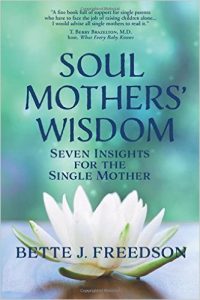with Bette Freedson
Can you remember a time when someone said, “Can I tell you a secret?”
Were you intrigued? Did you feel a slight stirring inside? What sort of revelation did you prepare yourself to receive?
Isn’t it funny how images and connotations, interpretations and expectations can make the body respond in certain ways?
What do you experience in your own nervous system when you expect a client is about to reveal some secret traumatic event? How does your body physically react? With impulses, shivers, goose bumps? Perhaps a sense of dread and queasiness in the belly, a catch of your breath . . .? While such disclosures are often necessary and vital to treatment, there are also other secrets that can bring healing to soma and soul.
Roald Dahl, author of Charlie and the Chocolate Factory, simply and profoundly captures the point when he writes, “The greatest secrets are always hidden in the most unlikely places.” This wise truth was delightfully demonstrated recently in a session with Neko, a twenty-two-year-old client with mild developmental delays, whose strength and soul wisdom had been hidden in the unlikely location of a traumatic past.
Having experienced delayed early milestones due to a severe seizure disorder that was finally successfully treated in Canada, Neko’s development was further disturbed by the loss of her mother to cancer when she was seven. Yet, despite multiple emotional, physical, and social challenges, Neko appeared to be doing reasonably well. She was living at home with her dad and stepmom, had finished high school (even after being dismissed from special services,) was attending a local two-year college, and happily working part time bagging groceries. Neko liked college and felt competent at her job, but despite these gains residuals of childhood issues manifested as low self-esteem and little sense of self-efficacy.
Referred by her psychiatrist, and introduced by her father via a letter outlining her history, her deficiencies, his perception of her minor strengths, and the possibility of some disordered eating, Neko started our first session by requesting to work on the friendship bracelet she’d been braiding in the waiting room.
With permission granted, Neko nodded and took a seat on the couch. Except for her hands working the colored string back and forth, Neko’s posture was stiff. I welcomed her and opened with questions about her project. Neko responded perfunctorily with one or two words, her gaze on her moving hands.
Somewhat unsure how or when to get to the content and revelation of the letter, I experienced a certain discomfort, an uneasy stiffness creeping into my own body. Was her father’s disclosure about the many found candy wrappers a secret to Neko? Then noticing Neko’s phone on the couch, I remembered the brilliant “secret” discovered by Milton Erickson, utilization—use whatever the client brings in!
“Do you have pictures of your bracelets?” I ventured.
To my surprise, Neko looked up, picked up her phone, and walked the few steps over to me. Now our conversation became animated. I felt my body relax as Neko leaned toward me delighted to show her pictures.
Subsequently, in sessions two and three, Neko was still working on her bracelets. However, she was making facial contact more of the time. Now we began to review her father’s letter, with Neko offering her own details and my moving gently to her father’s discovery of candy wrappers hidden in Neko’s room. Finally, with my mention of the candy wrappers, Neko became mildly uneasy and wooden again, hesitatingly acknowledging that she knew her father had revealed this in his letter.
How, I wondered, would we work this issue into Neko’s therapy goals?
With her mild processing delays and apparent lack of self-confidence, Neko was having difficulty identifying therapy goals in session four. Although I thought of several good ones, intuition pointed me wisely toward using somatic sensing.
“There’s no need to struggle to find a goal,” I told Neko. “Perhaps you’d enjoy taking a breath and visualizing pleasant scenes inside your mind.” Since Neko had revealed that she enjoyed meditating while listening to music on her laptop, I invited her to imagine her music while seeing pleasing scenes on her inner screen.
Now Neko closed her eyes, going into the suggested light trance.
After a few moments, Neko looked up. With a small smile beginning at the corners of her lips, she began to giggle.
“What’s happening?” I asked.
“There is a secret behind the scenes,” Neko answered, her eyes matching her broadening smile. “The secret…it’s that I don’t feel so good about myself a lot of the time.”
“That’s great?” I exclaimed, then quickly added, “I mean, it’s great that you found this secret.”
This time, we giggled together and I thanked Neko for sharing her secret. “Now that you have discovered the secret behind the scenes, what might it have to do with your goal?”
“I think it would be good to work on feeling better about myself,” Neko responded. “Also I want to finish college and get a good job.”
“These are good goals, Neko.” I affirmed. “I’m curious. How do you feel right now, knowing what you want to accomplish?”
“I’m really glad I found the secret behind the scenes.” Neko replied. “It feels good all over.”
“Those good feelings are important,” I told Neko. “They can help you remember your goals. Your good feelings can be like a ‘secret code’ that reminds you to feel good about yourself. You can even imagine some music for your feelings. Imagining the music can become another way to remember that you can feel good about yourself. Now, if you wish, you might enjoy absorbing the good feelings into your body where they can be available to you anytime.”
With this suggestion, Neko’s body settled into the couch as she took a gentle breath. After a moment, she giggled again.
“Where do you feel the giggle?” I asked.
“It’s everywhere, in my mind, and in my whole body.” Neko answered. When I giggle or think about giggling, I’ll remember that I can feel good about myself.”
“This session can also become a pleasing scene when you want to remember your secret and your goals. You can weave your goals into your life as beautifully as you braid your bracelets.”
This time Neko’s smile became a dimpled expression of her understanding, and I felt confident that as Neko worked on her goals we would eventually unwrap the secrets behind the scenes of the candy wrappers.

Editor’s note: Bette has her client’s permission, and this is not her real name, but name chosen by her to write her story.
Bette J. Freedson, LCSW is a clinical social worker, certified group psychotherapist, and the author of Soul Mothers’ Wisdom: Seven Insights for the Single Mother. Bette’s specialties include stress management, parenting issues, recovery from trauma and the development of intuitive insight. She maintains a private practice in southern Maine with her husband, Ray Amidon, LMFT.








